- Saludos Apreciados Hivers, es un placer unirme a la celebración vacacional que tenemos desde la comunidad @Holo_Lotus junto a unos amigos de juegos tradicionales, estrategias y aventuras que son @Hommedders y @crossculture Con ese genial equipo, llegaron dos iniciativas interesante que nos invitan a disfrutar, crear y compartir. Por lo tanto, me animó muchísimo a participar, sobre todo porque puedo incluir a mis pequeños en casa, que a pesar de que tienen edades diferentes, el juego y disfrute no tiene edad que lo restrinja.
En esta oportunidad nos reunimos para compartir acerca de los juegos tradicionales, lo más interesante es que seguramente, tú me contarás la experiencia con el que más te gusta de tu región o país, y yo te mostraré mi preferido. Será divertido aprender y explorar los juegos tradicionales de tu región o país.
Te comparto el link original para que te unas a participar. Será genial leerte.
@crossculture school vacation at home
Las vacaciones son un tiempo maravilloso de disfrute y relajación. Las vacaciones y el juego les encantan a los niños: Seres siempre felices.
Por ello, antes de escoger un juego tradicional para motivar a los pequeños, recuerda tomar en cuenta sus gustos y potencialidades. Existirán aquellos que les gusta la carrera de sacos, otros el papagayo, yo-yo, Garrufio, Carrera de carretilla, Perinola…Y así sucesivamente tenemos gran variedad para escoger. No todos somos expertos en cada juego, pero si nos encanta divertirnos. Entonces, siempre será importante fomentar la socialización y el compartir sanamente para el disfrute de los niños. Sobre todo en estas merecidas vacaciones.
Esta época es de suma felicidad para los pequeños de casa, aunque no hagan viajes exorbitantes. El motivo, es que pueden ver más seguido a todos sus familiares y amigos. La rutina, a pesar de que es importante para alcanzar metas, el tiempo de esparcimiento y de calidad junto a los seres queridos siempre nos llevará al equilibrio del ser.
En mi país, Venezuela cada juego tradicional viene cargado de bellos momentos de la infancia. Aquella hermosa y cálida infancia donde la tecnología todavía no nos arropaba. Pero, antes de seguirte contando acerca de estos entretenidos juegos y mi preferido, quiero expresarte mi visión acerca del porque son importantes los juegos tradicionales.
¡Pero! ¿Por qué es importante un juego tradicional?
Los juegos tradicionales nos definen como seres integrantes de un espacio, porque pertenecen propiamente a la región o país en la cual nacemos y transcurre nuestra infancia. Además, estos se realizan regularmente con materiales simples de la naturaleza, debido a que han surgido de las vivencias diarias. Si buscamos en su trayectoria a través del tiempo, encontraremos que la gran mayoría de los juegos tradicionales surgen, en esa necesidad interna de cada individuo por vincularse y crear el proceso de socialización y comunicación entre familiares y amigos de un mismo entorno.
En un mismo juego tradicional, siempre se entusiasman a jugar en espacios libres los niños de toda clase social; son juegos que nos integran en una sociedad. Además, van a representar parte de nuestra cultura, y seguramente nuestros tíos, abuelos, primos, y demás familiares también los jugaron. Entonces, siempre existirá un nexo con nuestros antepasados y familiares directos, al unirnos en sociedad y optar por la maravillosa idea de los juegos tradicionales de la región o país donde nacemos. Porque nuestros antepasados no tenían está tecnología actual, entonces ahora rompemos un poco con ese hermoso lazo de integración cultura a través del juego.
Desde ese punto de vista, vemos como la diversión con nuestros juegos tradicionales, fomenta la socialización y conservación de la cultura de cada región desde casa y en la escuela.
¡Ahora sí! ¿Cuál es tu juego tradicional preferido?
¡El mío es: El papagayo!
También conocido como papalote, volantín, pandorga, barrilete o cometa.
Los papalotes se originaron en China, alrededor de los años 1200 A.C. como una estrategia militar, en donde los colores y la forma constituían mensajes para tropas ubicadas a larga distancia.
Más tarde se convirtió en un juego infantil en Europa y finalmente llego a Latinoamérica.
¡ Materiales a utilizar!
Tijera
Pega blanca.
Retazos de tela de colores para la cola.
1 rollo de pabilo fuerte o hilo de nylon delgado.
3 trozos de verada de 60 o 40 centrimetros (madera liviana o varas de plástico liviano).
1 pliego de papel de seda, bolsas plásticas de mercado o cualquier otro papel muy liviano, de los colores que prefieras.
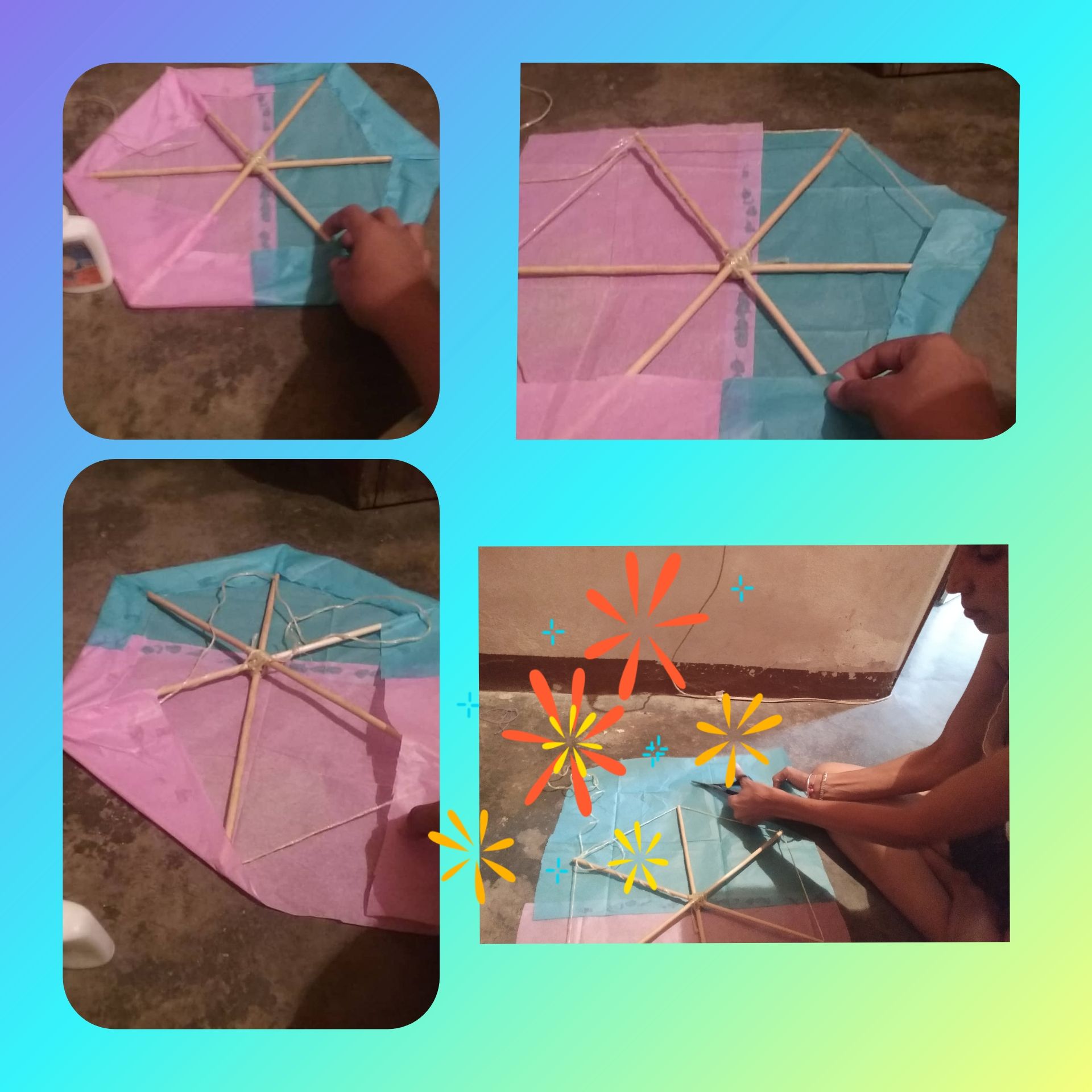
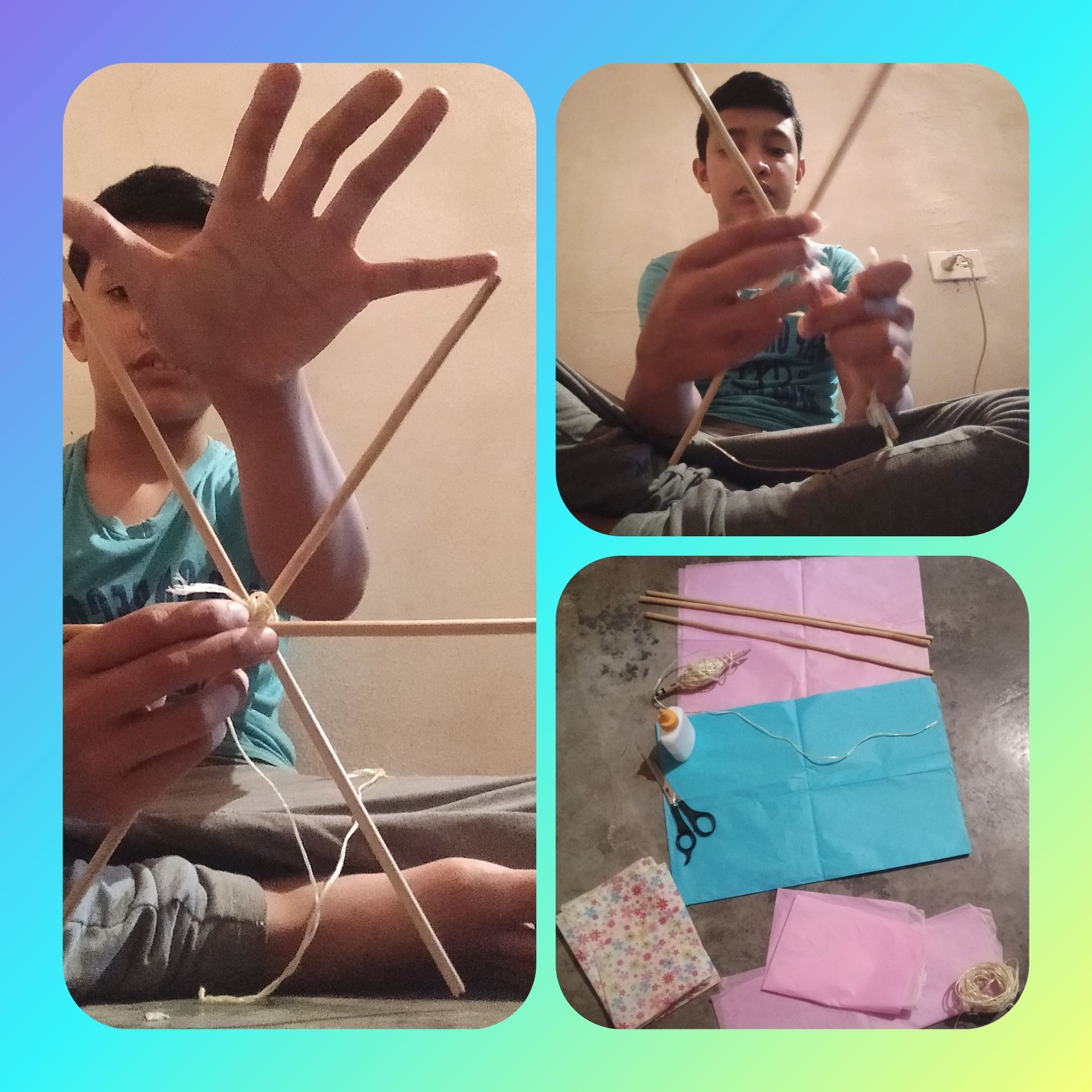
¡Pasos para crear tú Papagayo!
El primer paso para elaborar un papagayo es unir tres varitas de madera en el centro con un hilo fuerte.
En este punto a manera de tradición, en la niñez recuerdo que mediamos una cuarta de separación entre cada varilla, esto lo hacíamos a medida que entrelazábamos el hilo en el centro. Al parecer esto nos permite el equilibrio de la armazón del papagayo. A veces, la medida de la cuarta era motivo de risas según la mano de quien la medíia jajaja.
Antes de unirlas es importante hacerles una pequeña ranura de forma transversal en la punta de cada varilla.
Al terminar de sujetarlas en el centro, con fuerza y bien derechitas las varillas, se unen todas las puntas (por medio de la ranura hecha) con el mismo hilo que venías haciendo la unión en el centro, y así armar el bastidor.
Una vez que el armazón del papagayo esta hecho, se procede a pegar el papel de seda o bolsas plásticas sin que quede ninguna parte libre.
Se debe pegar bien cada borde para que nuestra armazón haga más resistencia con el aire, y por lo tanto, vuele mejor.
Luego, se amarran varios hilos en la parte superior del papagayo y en los bordes para poder volarlo mejor. Estos hilos se amarran así: dos hilos en la parte superior de un extremo a otro, calculando que los dos hilos lleguen al centro. Luego del centro sacamos un hilo que llegue hasta la parte superior y la marramos esos dos hilos, midiendo que llegue a uno se los extremos superiores, y simulando a su vez u triangulo entre los hilos. En esa punto es donde se amara el rollo de pabilo.
Luego en la parte inferior amarramos de un extremo a otro un hilo y calculemos que llegue hasta el centro, y que además que un poco más largo para hacerle un arito, ya que allí colocaremos la cola. La cual es una cuerda con retazos de tela en la cola para darle estabilidad.
¡Y listo! Tendrás tu papagayo para disfrutar.
Antes de retirarme quiero invitar a la amiga @care1968 y @lisbethseijas a participar.
¡Y que siga la tradición cultural!
Recuerda usar las etiquetas #tradsports, #child-activity
Los artistas y Creadores del papagayo son mis hijos
Imágenes de mi propiedad editadas en GidArt
✨English Version✨
- Greetings Dear Hivers, it is a pleasure to join the holiday celebration that we have from the @Holo_Lotus community together with some friends of traditional games, strategies and adventures that are @Hommedders and @crossculture With that great team, two interesting initiatives have arrived that invite us to enjoy, create and share. Therefore, it encouraged me a lot to participate, especially because I can include my little ones at home, who despite being of different ages, the game and enjoyment have no age that restricts it.
This time we meet to share about traditional games, the most interesting thing is that surely, you will tell me the experience with the one you like the most in your region or country, and I will show you my favorite. It will be fun to learn and explore the traditional games of your region or country.
I share the original link for you to join to participate. It will be great to read you
@crossculture school vacation at home
Vacations are a wonderful time of enjoyment and relaxation. Holidays and games are loved by children: You are always happy.
Therefore, before choosing a traditional game to motivate the little ones, remember to take into account their tastes and potentialities. There will be those who like the sack race, others the papagayo, yo-yo, Garrufio, wheelbarrow race, Perinola... And so on, we have a great variety to choose from. We are not all experts in each game, but we do love to have fun. So, it will always be important to encourage socialization and healthy sharing for the enjoyment of children. Especially on these well-deserved vacations.
This time is extremely happy for the little ones at home, even if they don't make exorbitant trips. The reason is that they can see all their family and friends more often. The routine, although it is important to achieve goals, leisure and quality time with loved ones will always lead us to the balance of being.
In my country, Venezuela, each traditional game is full of beautiful childhood moments. That beautiful and warm childhood where technology had not yet wrapped us up. But, before continuing to tell you about these entertaining games and my favorite, I want to express my vision about why traditional games are important.
But! Why is a traditional game important?
Traditional games define us as integral beings of a space, because they belong to the region or country in which we are born and spend our childhood. In addition, these are regularly made with simple materials from nature, because they have arisen from daily experiences. If we look at their trajectory through time, we will find that the vast majority of traditional games arise from that internal need of each individual to bond and create the process of socialization and communication between family and friends in the same environment.
In the same traditional game, children of all social classes are always excited to play in free spaces; they are games that integrate us into a society. In addition, they will represent part of our culture, and surely our uncles, grandparents, cousins, and other relatives also played them. So, there will always be a link with our ancestors and direct relatives, as we unite in society and opt for the wonderful idea of traditional games from the region or country where we are born. Because our ancestors did not have this current technology, so now we break a little with that beautiful bond of cultural integration through the game.
From this point of view, we see how having fun with our traditional games fosters socialization and preservation of the culture of each region at home and at school.
Now yes! What is your favorite traditional game?
Mine is: The Papagayo!
Also known as kite.
Kites originated in China around 1200 B.C. as a military strategy, where the colors and the form constituted messages for troops located at a long distance.
Later it became a children's game in Europe and finally reached Latin America.


Materials to use!
Scissors
White glue.
Colored fabric scraps for the tail.
1 roll of strong wick or thin nylon thread.
3 pieces of verada of 60 or 40 centimeters (light wood or light plastic rods).
1 sheet of tissue paper, plastic market bags or any other very light paper, in the colors you prefer.
Steps to create your Papagayo!
The first step in making a papagayo is to join three wooden sticks in the center with a strong thread.
At this point as a tradition, in childhood I remember that we mediated a quarter of separation between each rod, we did this as we intertwined the thread in the center. Apparently this allows us to balance the frame of the parrot. Sometimes, the measurement of the fourth was a source of laughter depending on the hand of the one who measured it hahaha.
Before joining them, it is important to make a small crosswise groove at the tip of each rod.
When you finish holding them in the center, with force and straight the rods, all the ends are joined (by means of the slot made) with the same thread that you were making the union in the center, and thus assemble the frame.
Once the frame of the parrot is made, proceed to glue the tissue paper or plastic bags without leaving any free part.
Each edge must be glued well so that our frame makes more resistance with the air, and therefore, it flies better.
Next, several threads are tied to the top of the papagayo and around the edges to make it easier to fly. These threads are tied like this: two threads at the top from one end to the other, calculating that the two threads reach the center. Then from the center we take a thread that reaches the top and tie those two threads, measuring that it reaches one of the upper ends, and simulating in turn a triangle between the threads. At that point is where the wick roll will be tied.
Then in the lower part we tie a thread from one end to the other and calculate that it reaches the center, and also that it is a little longer to make a ring, since there we will put the tail. Which is a rope with pieces of cloth on the tail to give it stability.
And ready! You will have your papagayo to enjoy.
Before retiring I want to invite my friend @care1968 and @lisbethseijas to participate.
And follow the cultural tradition!
Remember to use the tags
#tradsports #child-activity
Images of my Property edited in GidArt
- The Artists and creators of the Papagayo are my son*


















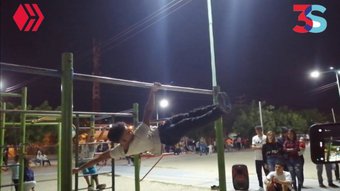





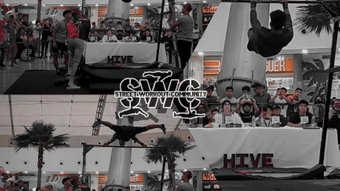

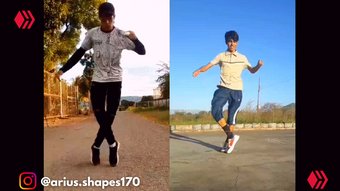






Comments:
Reply:
To comment on this video please connect a HIVE account to your profile: Connect HIVE Account